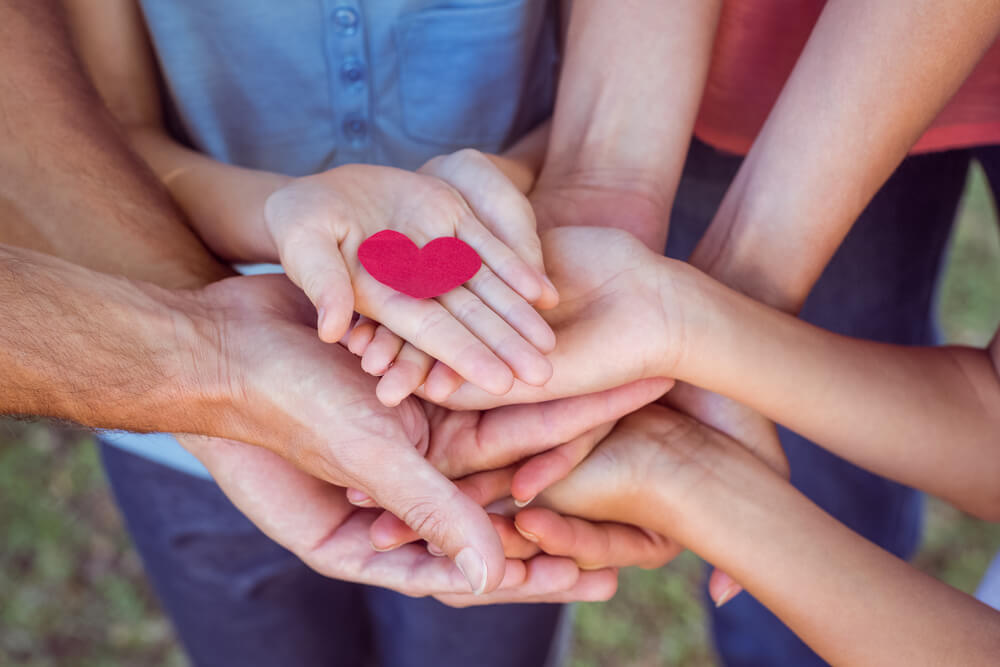Summer safety for children: water, insects and sun
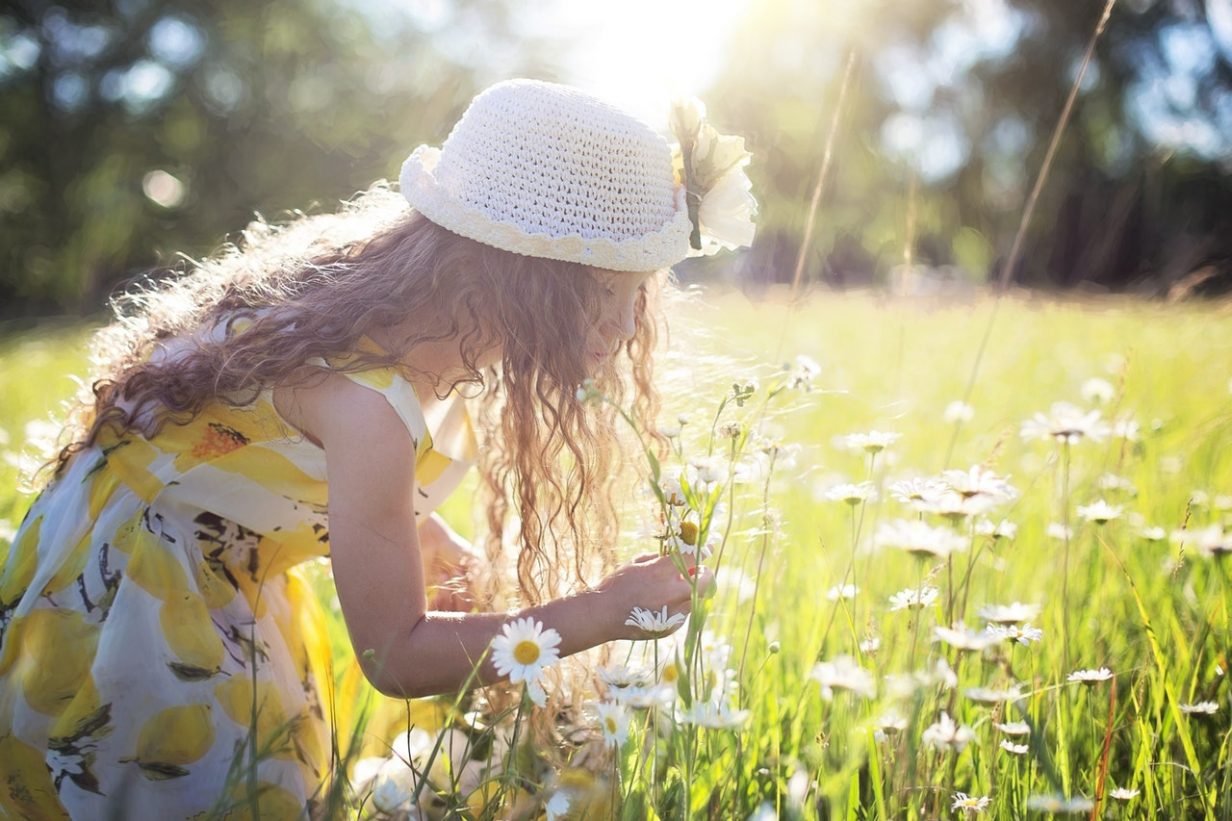
Summer is the most awaited season of the year for both children and their parents. During this period, so many activities can be enjoyed, such as outdoor walks, swimming, riding the bicycle and doing plenty of other things for which there has not been enough time all year. In order for this exciting time not to become marred by injuries and illnesses, all that’s necessary is to respect some safety rules.
Even if your children are exemplary with regards to being careful and responsible, it is still important to often remind them about safety during summer break. According to the experience of traumatologists and pediatricians, even adults do not always know how to behave in a situation of an emergency, not even to mention children.
Contents:
- Summer safety — general rules
- Safety rules for children when on water
- Safety on the outdoors
- Food poisoning and dehydration
- Beware of the sun! Sunburns and overheating
- Summertime fun and child safety
- Tips for parents and their children
Summer safety — general rules

Prostock-studio/Shutterstock.com
A short guide to basic summer safety rules is presented in the table below:
| Swimming | The sun | Food and drinks | Insects | Socializing |
| Swimming should only be allowed in specifically designated areas. It should be prohibited to swim too far away from the coast and to be playing dangerous games when in water. | The head should be covered throughout the day at all times, not only on sunny days: staying under the sun rays for too long is not healthy. | Take the time to examine the «best used by» label on food products and do not take any quickly perishable food on picnics; drinking as much pure unsweetened water as possible, is also highly advised. | If a potentially dangerous insect is nearby, such as a wasp or a bee, it is imperative to avoid all abrupt movements. | If a child is going on a walk without their parents, they should know that they can only speak to the people they know. Screaming for help as a joke is something that should never be done. |
⠀
Do you worry about your child when they walk alone? Be sure that they are safe and in no danger. Download the «Findmykids» app from the AppStore and GooglePlay.
Safety rules for children when on water
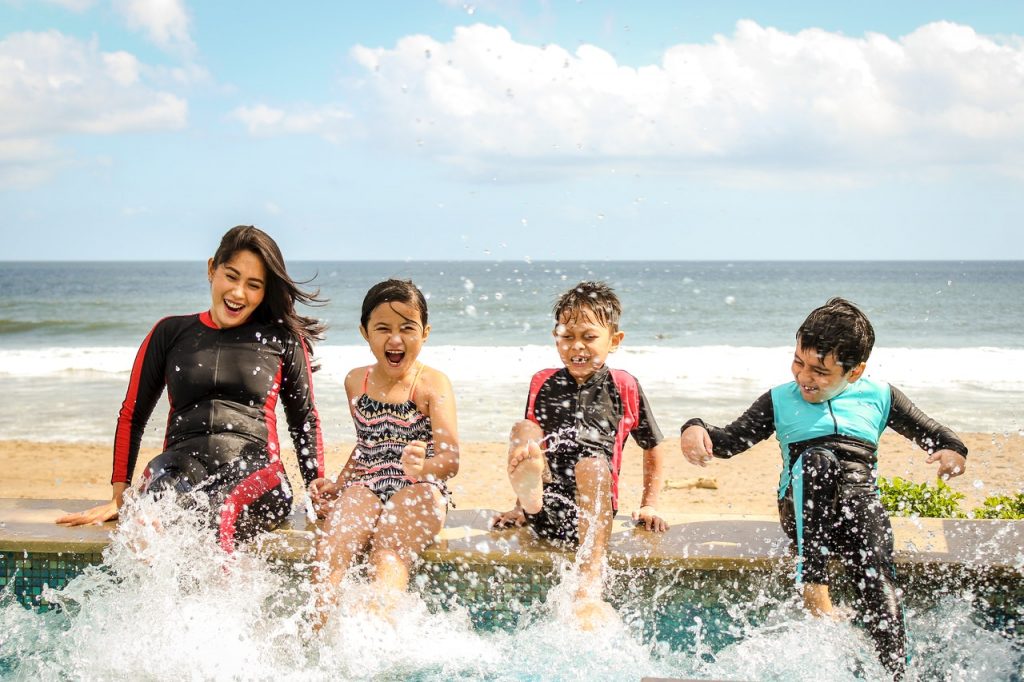
Prostock-studio/Shutterstock.com
The safest way for a child to spend time by the water is under the supervision of adults. However, as accompanying a child everywhere is not always an option, especially if they are no longer a baby, it is very important to speak to your son or daughter about the correct behavior when on a pond or on any other body of water. Even if you are going swimming together – the child will still need to keep in mind the following rules:
- if a child is younger than 10 years old and does not feel confident enough in the water, use a swim vest;
- explain to your children that playing hide and seek under the water or attempts to jokingly «drown» each other, is very dangerous;
- explain why it is not allowed to swim, or, even more so, to dive in unfamiliar places or places heavily overgrown with algae. The child may hurt themselves with underwater stones or rubbish. Diving too deep into the water can lead to tragedy;
- it is dangerous to swim far into the waters on inflatable mattresses: they are not reliable as they are adapted for swimming along the coastline only;
- keep an eye on the duration of the swim: staying in cold water for too long may lead to hypothermia;
- purchase a pair of appropriate footwear for your children to prevent them from injuring themselves with the rocks on the beach or under the water.
Safety on the outdoors
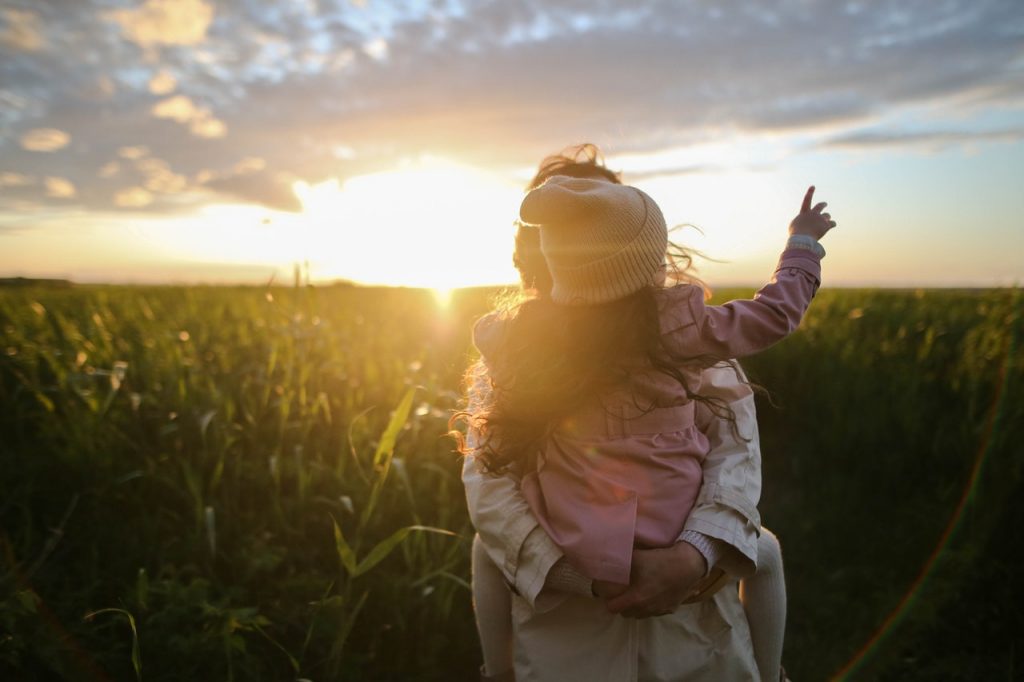
Prostock-studio/Shutterstock.com
During the short summer season, people living in cities try to get out of it as often as possible and to go on picnics, barbecues, hiking, and camping. Moreover, a trip to nature is an excellent option for a holiday with children: the child gets to breathe some fresh air and to replenish their vitamin D levels during short sunbathing sessions.
When camping with children, be careful: an active child may try to taste unfamiliar mushrooms or berries, may want to play with fire, may not put enough importance to risks that insects bear, and will not know how to behave during a thunderstorm.
In the forest
Safety rules in the forest:
- both adults and children should be wearing appropriate clothing, such as a tracksuit with long sleeves, non-slip shoes with thick soles, and something to cover the head. Make sure that clothes are not too tight to the body; if a tick, mosquito, or another dangerous insect tries to bite you or your child, it will be much more difficult to get to the skin through spacious clothes than through tight-fitting ones;
- do not taste nor have your child taste berries or mushrooms that are unknown to you. Explain to your children that unfamiliar plants in the forest can become the reason for very serious poisoning;
- keep an eye on your children to make sure that they are not left behind or are not too far ahead;
- explain to them that it is very easy to get lost in a forest and it is very difficult to get out of it. Discuss with your child what to do if they, for some reason, lose their parents out of sight: it is very important to remain where they are and to be calling their parents loudly.
Losing a child is a parent’s greatest fear. To minimize risks and save your nerves, use the parental control app and children’s smartwatches with GPS-tracker. This way you will be safe for your child, no matter where they are.
Games around fire
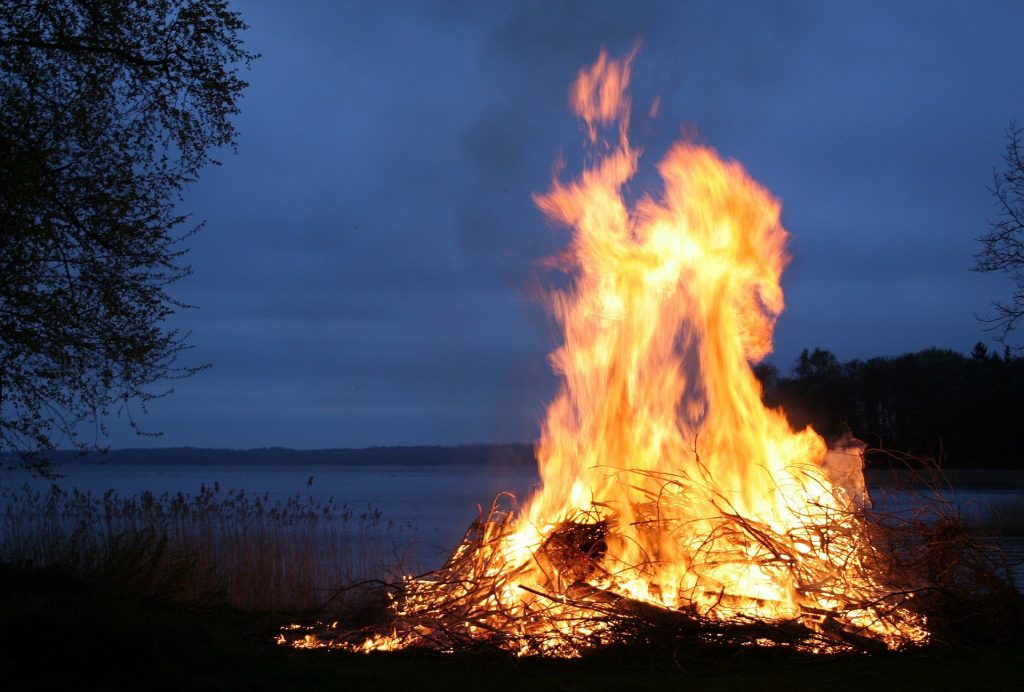
Prostock-studio/Shutterstock.com
According to the statistics, as much as 90% of the wildfires in the US, are human-caused. Strictly follow the fire safety rules in forests, outlined below:
- the child should not be allowed to take a lighter or matches in their hands and try to make a fire on their own;
- playing with fire is strictly not allowed. Throwing objects that are not appropriate to start a fire, especially highly flammable ones, as well as lighting up small pieces of wood or grass from the fire, can be very dangerous;
- fire can only be made in a properly equipped place: in an area cleared of grass, branches, and small debris. When leaving your picnic area, make sure that the fire has been fully extinguished.
Dangerous insects — first aid
What to do if your child got bitten by a dangerous insect:
Ticks
How to understand that your child got bitten by a tick:
- a tick bite can often be painless, therefore, when walking in parks or in the forest, inspect the child frequently; focus on their head, under their hairline and the area behind the ears;
- if a tick is found on clothes, simply shake it off; ticks take a while selecting a place for a bite;
- beware of female ticks, they are particularly dangerous as they are major carriers of infections. They become significantly bigger after the bite and adapt a metallic shade.
First aid in the event of a tick bite:
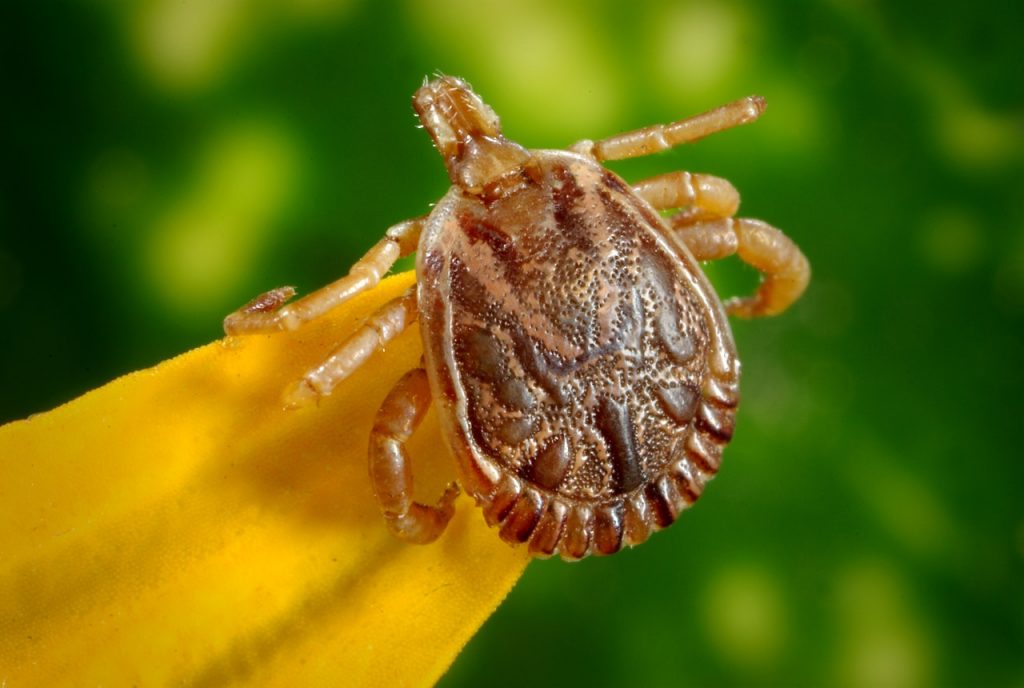
Prostock-studio/Shutterstock.com
- remove the insect as soon as you spot it with the use of tweezers or with a special device that can be purchased in pharmacies. Grab the insect at the very base and pull it out with a rotational movement;
- check if the tick has fully gone out. If its’ head is still under the skin, remove it with a sterile needle, whilst treating the affected area with any alcohol-based solution pre and post removing the head of the tick;
- consult a doctor within 72 hours after the bite — the doctor will carry out the procedures to prevent Lyme disease, and will prescribe the necessary tests.
Mosquitos
Here is how to avoid mosquito bites and which anti-mosquito remedies are recommended for your children:
- use repellents appropriate to the child’s age, apply the product strictly in accordance with the instructions. Carrying repellent wipes on you is a great option too;
- if it is not too hot outside, have your child wear some light-colored clothing, as mosquitos are not attracted to light shades;
- if the mosquito has already bitten the child and the area of the bite has itching and irritation, you can treat the skin with special post-bite products for children, that are infused with calendula;
- if other symptoms add up to skin irritation post mosquito bite, such as severe itching or fever, consult a healthcare professional.
Bees and wasps
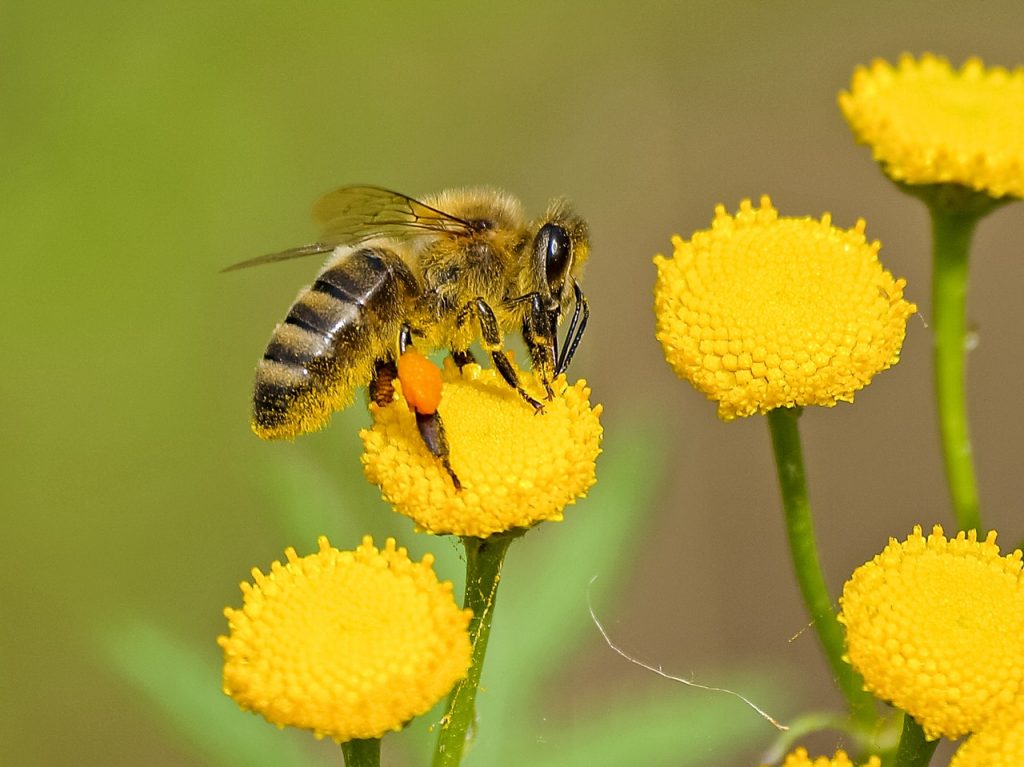
Prostock-studio/Shutterstock.com
In order to avoid attracting the attention of wasps, refrain from using skincare products or perfume with a strong smell. Bees, on the other hand, are much harder to avoid, as they sting people to «evict» them from «their» area. In any case, if a child got bitten by a flying insect, move them away from the place where it has happened, as quickly as possible.
First aid in the event of a bee or a wasp sting:
- remove the venom without twisting it. Use, for instance, the top of the handle of a knife;
- monitor the condition of your child: if they start experiencing trouble breathing or swelling, call 911 immediately;
- if the child is feeling fine and nothing else besides the affected area bothers them, wash it with soap and apply a topical cream for insect bites appropriate to the age of your child, or place a cold compress on it for an hour.
Thunder and lightning — what to do
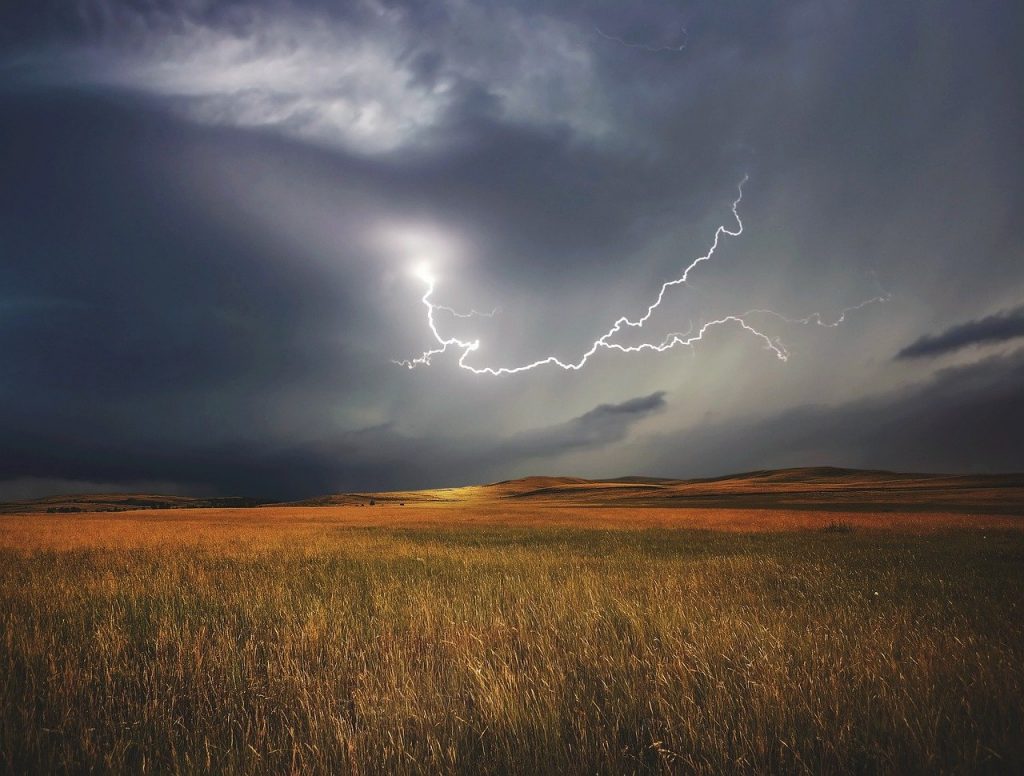
Prostock-studio/Shutterstock.com
Explain to your child that thunder is not only entertaining and exciting, but also very dangerous: lightning may cause fire and seriously harm people, it may burn and injure them.
Here are some clear indications that thunder is approaching:
- the air becomes much more humid;
- the air becomes stiff;
- birds fly abnormally low.
What to do if a thunderstorm started when you were in the outdoors:
- if you are in the open space – leave immediately;
- try to find shelter: this should not be in a tent and by no means, under a tree. If there no buildings nearby, hide in a hole or any other indentation in the ground;
- move as far away from the water as possible, as water is known to be an excellent conductor of electricity;
- turn off all mobile devices;
- get rid of any metal objects, and stay away from metal constructions and power lines.
Food poisoning and dehydration
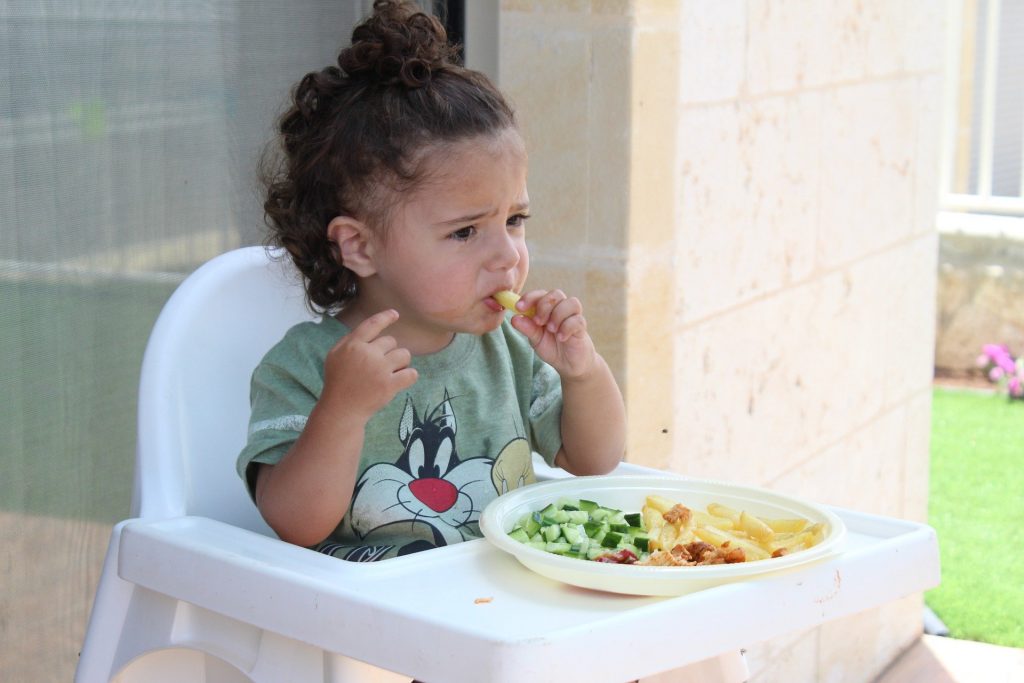
Prostock-studio/Shutterstock.com
How to prevent your child from getting food poisoning:
- always wash your hands before a meal, and if the children are on the outdoors – clean their hands with antibacterial wipes;
- do not take any food that spoils quickly on such trips;
- wash all fruit and vegetables thoroughly;
- do not feed any fruits that are not ripe for the season to your child, as the probability that some harmful elements have been used to artificially ripen them (that may lead to poisoning), is very high.
If the child is complaining about having abdominal pain, nausea, vomiting, and diarrhea, have your son or daughter drink plenty of water and call a doctor.
Children suffer from dehydration more often than adults – especially in the summer, when it is hot outside and the outdoor games are played all day long.
Here is how to prevent dehydration in a child:
- give them a bottle of water when they are going out;
- when needed, remind your child not to forget to have a drink of water frequently, especially when playing active sports;
- teach your child to quench their thirst only with pure water and not with sugary drinks or ice cream, as they would make them even thirstier;
- before walking outside, spray some water all over the child with the use of an atomizer.
Beware of the sun! Sunburns and overheating

Prostock-studio/Shutterstock.com
Taking walks in the sun is, of course, good for the child, however, this needs to be done in moderation, whilst getting used to solar activity little by little. Excessively long exposure to the sun can lead to overheating, burns, heatstrokes or sunstrokes. It is surely better to prevent such problems than to be getting treatment for them afterward.
Here is what the child needs to know when spending time in the sun:
- according to the WHO, the sun’s UV rays are the strongest between 10 am and 4 pm. During this time, it is best to remain indoors as much as possible, in order not to overheat;
- if a tingling sensation appears on the skin, it is important to move to an area with shade immediately;
- sunscreen needs to be applied 15 minutes prior to going outside;
- when walking outside, the child needs to cover their head and wear light loose clothing.
The heatstroke and the sunstroke: symptoms and ways to help
The symptoms of heatstroke: tiredness, drowsiness, headache, nausea, dilated pupils, in severe cases – vomiting, fainting, cramps, and fever.
The symptoms of a sunstroke: tiredness, tinnitus, fever, nausea, vomiting, diarrhea, and occasional nosebleeds.
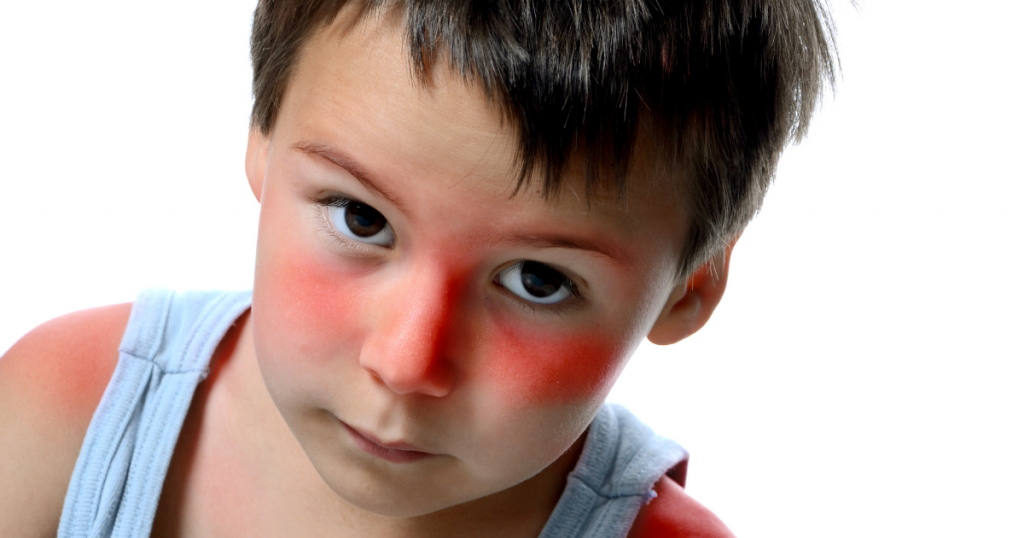
Prostock-studio/Shutterstock.com
The main difference between heatstroke and sunstroke is that heatstroke can be a result of exposure to heat which can occur even indoors, while a sunstroke may be a result of long exposure to direct sunlight. First-aid measures against the heatstroke and the sunstroke are the same:
- move the child to an area with shade and call an ambulance;
- lay a cold compress on their head;
- liberate your child from clothing as much as possible, especially, on their upper body;
- have them drink lukewarm water in small portions;
- go over the exposed areas of the child’s body with a damp cloth;
- if the child is feeling sick — turn them to the side.
Sunburns
Symptoms of sunburns reveal themselves several hours after the exposure to the sun: the skin turns pink or red, an itching sensation appears on the burned area, and touching those areas becomes painful. In severe cases, blisters may form on the skin, accompanied by fever, nausea and fainting.
First aid for a child with a sunburn:
- if sunburns are accompanied by fever or fainting — call 911;
- if there is no need for medical assistance — move the person away to an area with shade and place a cool compress on the affected area;
- use special sunburn treatments that are sold in pharmacies.
Summertime fun and child safety
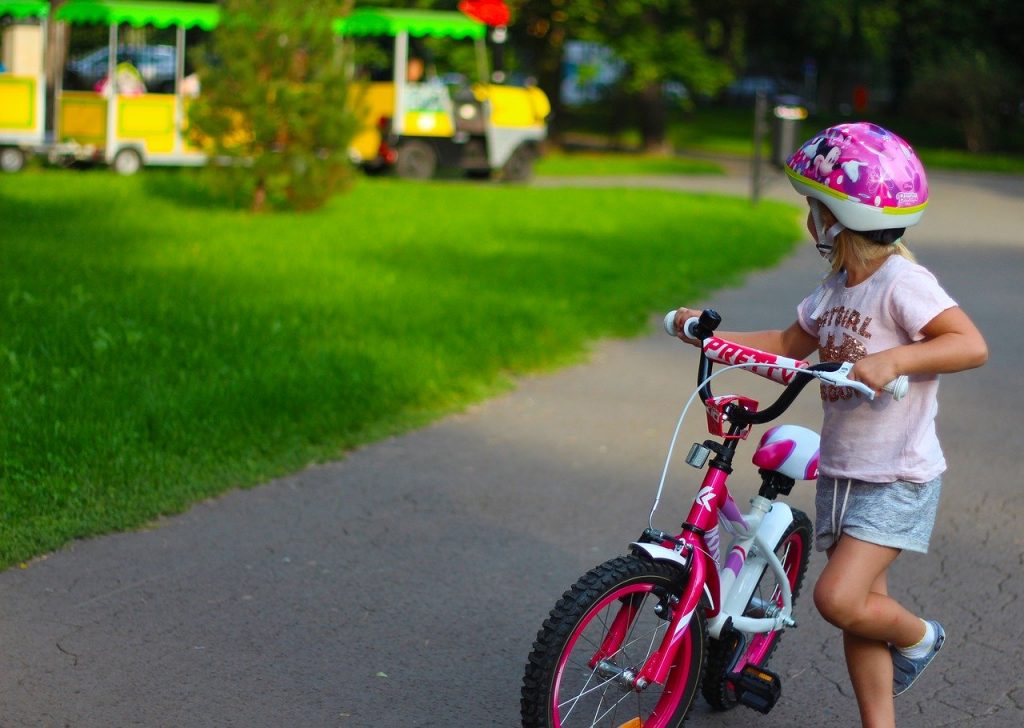
Prostock-studio/Shutterstock.com
Summertime leisure activities are both captivating and beneficial for the child: in winter, the child cannot ride a bicycle or a scooter nor go roller skating. Nevertheless, any active sport can be dangerous! According to statistics, bicycle accidents and falls are some of the main causes of childhood injuries in the summer. Follow safety rules during summertime activities, and have your child’s health become even stronger!
Injuries, cuts and bruises
Tell your child what are the rules to follow during summer activities in order to minimize the risk of injuries:
- when riding a bicycle or a scooter, or going roller skating, it is necessary to protect vulnerable areas of the body with a helmet, as well as with knee and elbow pads. Pediatric surgeons are convinced that most injuries could have been avoided if children had been properly equipped;
- roller skates, bicycles or scooters should be of a size that is suitable for the child: the bicycle should not be low or too high, roller skates should sit tight on the ankle or the foot, without being overly tight;
- an electric scooter is a dangerous means of transportation; it can go at very high speeds, may not be visible to car drivers and can cause problems to pedestrians on sidewalks. Therefore, it is best to opt for a normal scooter instead of an electric one;
- anyone can fall over during a ride, thus, it is important to learn to fall properly: to regroup as much as possible, and to bring the arms close to the body.
First aid for cuts:
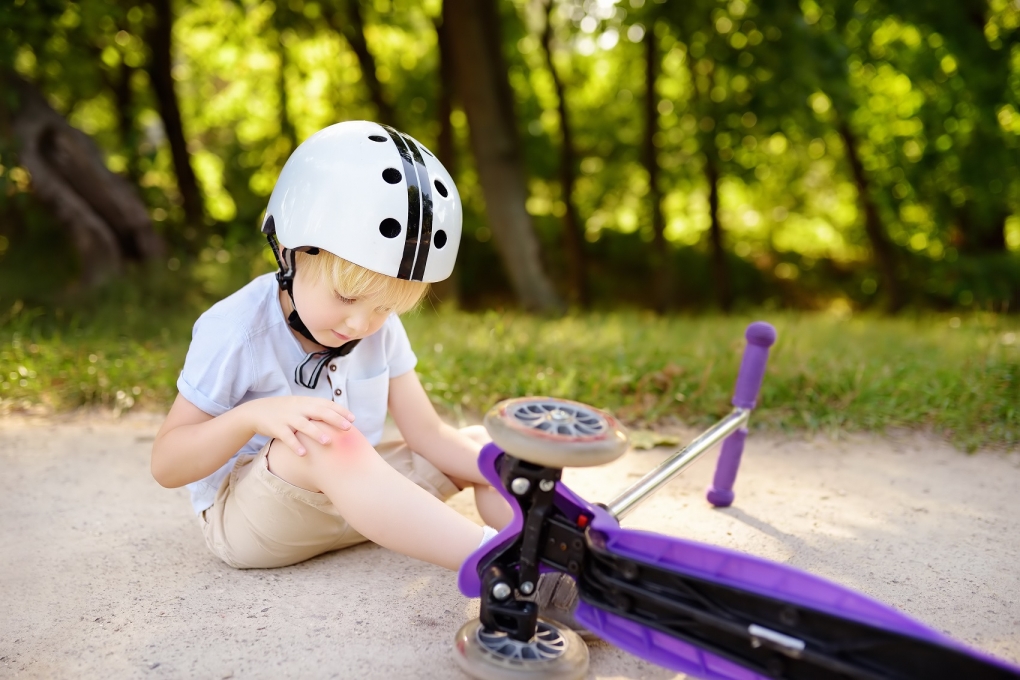
Prostock-studio/Shutterstock.com
- remove the dirt around the cut with clean hands, ideally in sterile gloves;
- treat the affected area with antiseptic substance;
- if bleeding cannot be stopped, call an ambulance.
First aid for bruises:
- place something cold against the bruised area; it may be ice, frozen food, or a damp cloth;
- if the child is complaining about severe pain, give them a painkiller for children;
- if the pain doesn’t go away or worsens— seek medical assistance.
It may prove itself to be difficult for an inexperienced person to assess the severity of an injury, and if the child fell from a height, it is better to show their bruise to the doctor, even if the child does not complain of having severe pain, in order to rule out the possibility of a fracture.
Active sports
If your child is into swimming, soccer or rock climbing, they need to respect the following basic safety rules when practicing active sports:
- allow your child to gradually adapt to physical activity, especially if they do not have a lot of experience in this area;
- it is best to learn more complex sports, such as scuba diving or rock climbing, with an instructor;
- before every session, make sure that your child is wearing appropriate safety equipment.
Safety on the playground

Prostock-studio/Shutterstock.com
Have a look at the playground first in order to make sure that it is safe: that there is no shattered glass or other waste on it, and the swings are attached to their base correctly. Teach your child to use the swing: to approach it only from the side and to stay as far away as possible from it when not using it.
Explain to your child that in the hot weather, metal heats up, therefore, it is better not to ride off a metal slide. Explain that jumping on a trampoline in the presence of other children can be dangerous, as there is a hazard of hitting another child by accident.
Tips for parents and their children
Below is child safety memorandum that covers the most important points:
- it should not be allowed to talk to strangers, even if they are women or other children;
- if someone attempts to take the child somewhere by force, they need to scream and to attract the attention of adults however they can;
- if the child suspects they are being stalked, they need to reach out to a policeman or go to a place with people, such as a bank or a café and to get in touch with their parent from there;
- check whether your child knows the phone number of at least one of the parents, by heart. The child’s mobile phone may get lost and getting in touch with parents, without knowing their number, may prove itself to be hard;
- if there is an attempt to attack the child in a building, tell them to scream «fire!» loudly, to knock on all doors and shatter glass, as all measures to attract the attention of adults would help;
- always know where your child is and what they are doing with the use of the «Findmykids» phone application or GPS watch. You will know where your child is at all times, in real-time conditions, as well as where they have been. In the event of danger, you will receive an emergency notification, even if a phone call cannot be made.
Despite the potential dangers that it holds, summer would always remain the favorite time of the year for both children and their parents. In the summer, all worries about studies are gone, and many opportunities for spending time together as a family arise, with trips, playing sports, games and walks. Do not neglect the reasonable safety rules, and no trouble will marre your summer!
Проверьте электронный ящик















